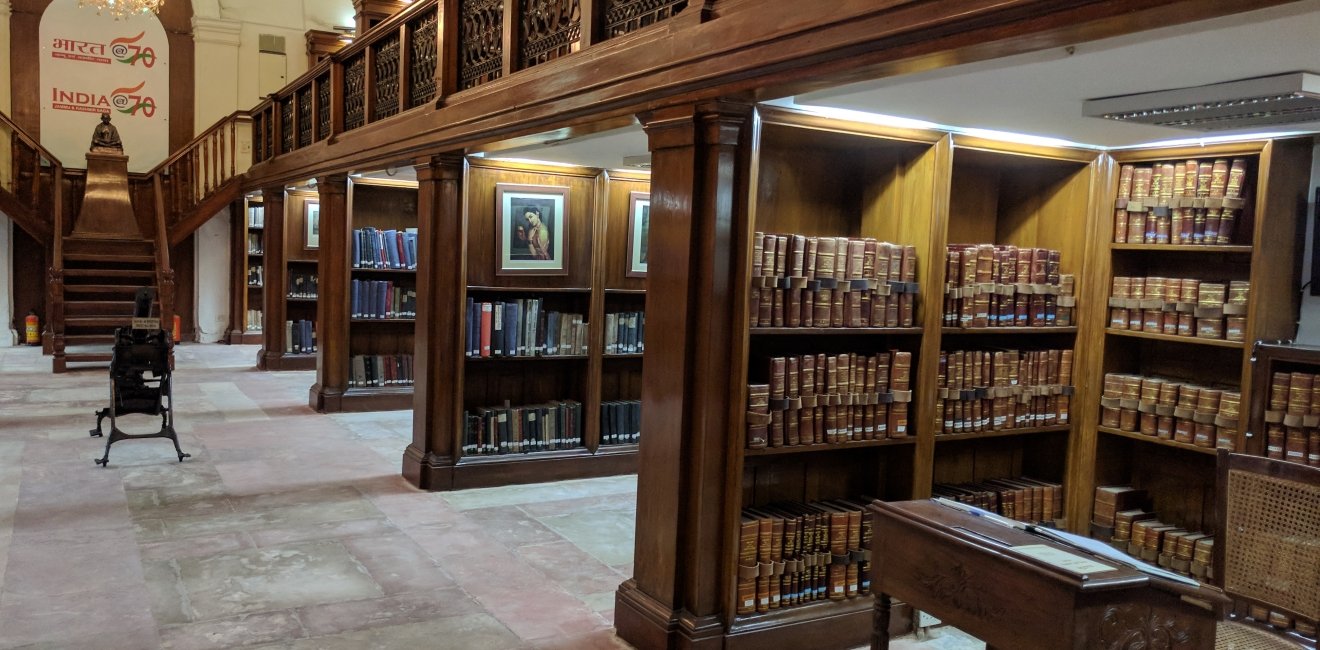An Online Source Primer for the Study of Cold War India
Swapna Kona Nayudu surveys a wealth of archival materials relating to India's Cold War era history that are readily available online.

A blog of the History and Public Policy Program
Swapna Kona Nayudu surveys a wealth of archival materials relating to India's Cold War era history that are readily available online.

During the past year, the National Archives of India was beset by questions of reorganization, access, and the effects these issues would have on writing histories of India. As the National Archives and the Nehru Memorial Museum and Library came under scrutiny for ongoing renovations, historians of India began to look elsewhere for archival sources; given the ongoing pandemic, our attention shifted to digitized documents primarily of post-1947 government archives.
These digitized materials include collections on websites as well as “Collected Documents” series, available in hard copy, but also now available by authors or publishers in Portable Document Format (PDF), accessible online in their entirety. I have previously written about the newly launched database Ideas of India, an archive of pre- and post-colonial Indian periodicals. The following is a discussion of archives focused less on the socio-cultural space and more on official documents issued by various government ministries.
For the study of India’s international relations, the first port of call has become the Abhilekh Patal, which holds digitized copies of documents from the Ministries of Home, Defence, and External Affairs, as well as catalogues for the physical archives, and audio visual media. This can be used to supplement the collection of the National Digital Library of India that is administered by the Ministry of Education, which is a set of resources less focused on India’s international history and more useful for providing the wider context of Indian public life.
The Prime Minister’s Office and the President of India’s Office also have their own archives that are modelled somewhat on the US presidential libraries system. Although the Government of India launched the Nehru Portal on the occasion of the 125th birth anniversary of Jawaharlal Nehru, the first Prime Minister of India, the website of the Nehru Memorial Fund is a more accessible alternative and leads to the Selected Works of Jawaharlal Nehru. Combined, the First Series (pre-independence) and Second Series (1947-1964) of the Selected Works include 100 volumes of Nehru’s writings. Similarly, the 98 volumes of the Collected Works of Mahatma Gandhi can also be found online in downloadable e-book format.
Specifically for the study of Cold War India, the Ministry of External Affairs has a large swathe of documents. Its own collections of annual reports are divided in two parts: Annual Reports (1948-2010) and Annual Reports (1999-2021). A particularly useful database is the Foreign Affairs Records (1955-1999), which includes statements, speeches, and documents detailing India’s approach to international and regional organizations during the Cold War and in the immediate aftermath of the collapse of the Soviet Union.
On bilateral relations between India and neighboring countries, Avtar Singh Bhasin’s indispensable edited series India’s Foreign Relations is divided annually for the years 2003, 2004, 2005, 2006, 2007, 2008, 2009, 2010, 2011, 2012 and 2013. Along with documents issued by the Government of India on bilateral or multilateral cooperation, treaties signed by India via the Legal and Treaties division of the Ministry of External Affairs and official briefs on India’s relations with other states and with multilateral organizations are also now fully accessible online. Avtar Singh Bhasin has also edited 10 volumes of documents procured from the Public Diplomacy Division of the Ministry of External Affairs on India’s relations with Pakistan and 5 volumes of documents on India’s relations with China.
Sources from other ministries of the Government of India that can be used to supplement the archives of the Ministry of External Affairs include:
In recent years, the Ministry of External Affairs has made performance statistics and other quantitative data available, as well as offering commentary on India’s historical international relations through the Indian Foreign Affairs Journal, published by the Association of Indian diplomats - in addition to research and analysis, the site collects oral histories from former diplomats, which can be used in combination with the Ministry of External Affairs’ own Distinguished Lectures Series.
Problems of decay, disarray, and disorganization within physical archival holdings has often led to historians and archivists asking for more resources to digitize holdings, especially in the National Archives of India, arguably the worst affected by lack of digitization. Yet, there has been no room for tackling larger questions around selective digitization and how the technical expertise of archivists aligns with such digitization of primary sources. As far as digitizing text, there has been some improvement in the last decade on how archival material is made ready for consumption – the same cannot be said for audio and visual material that is still very hard to access and faces systemic issues. While those are being addressed, the relationship between Indian archives and debates around digitization remains a tenuous one.


A leader in making key foreign policy records accessible and fostering informed scholarship, analysis, and discussion on international affairs, past and present. Read more


The Cold War International History Project supports the full and prompt release of historical materials by governments on all sides of the Cold War. Read more



